From 2023, Black Friday should be fairer. Hlídač shopů, a Czech data analyst platform, comprehensively analyzes how Czech e-shops have coped with the amendment to the Consumer Protection Act. See who's sticking to the law, who still needs to catch up, and who's trying to duck out of it.
This year's Black Friday (BF) is different, at least in the Czech Republic. It was the first Black Friday with new rules brought by the amendment to the Consumer Protection Act in January. The unfair practices we've been pointing out for years are finally illegal. Who has managed to prepare, who else are we finding problems with, and who needs to pay more attention to the new rules? Let's take a look at the traditional analysis from Hlídač shopů.
This year, we will primarily focus on the mandatory minimum price before the event, especially its correct calculation. We will also examine the ingenious use of discount coupons and other "discount" labels.
Let's start with an overview table, which shows, among other things, the difference between the average stated and average real discount of products in the BF offer:
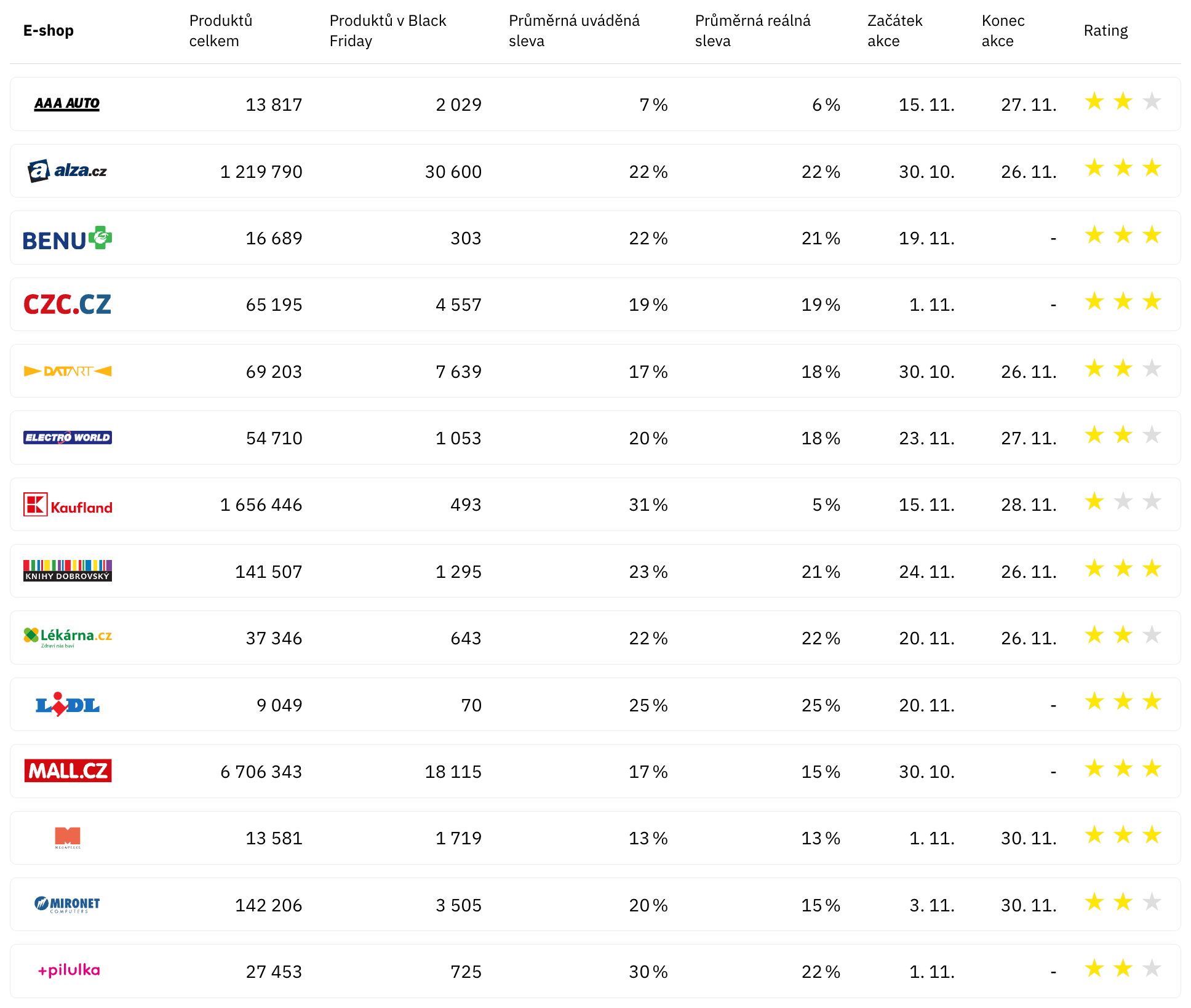
The overview shows that most of the e-shops we monitored have complied with the new rules, and the discounts are realistic. The average discounts are around 20%; those who report an average of over 25% are only doing so due to unfair practices and violating the new law.
This year, the worst was Kaufland.cz, which launched its online marketplace this year (or rather, the retailers offering their goods there). The average reported discounts in the BF offer were 31%, but if they were calculated according to the new rules, we would get to 5%. Pilulka.cz also fared badly (30% vs. 22%), which surprised us as it calculated discounts correctly last year.
Unfortunately, we failed to calculate average discounts for other problematic e-shops like Okay.cz, Notino.cz, or TetaDrogerie.cz for various reasons. But their practices are shown in more detail below.
On the other hand, the most prominent Czech e-shops we have been following for over five years (Alza.cz, Mall.cz, and CZC.cz) are doing their best and, in most cases, are aligned with the new rules. Of the other e-shops we monitored, Megapixel.cz did very well, as did Lidl.cz and KnihyDobrovsky.cz.
Who is breaking the new law?
Let's look at some interesting examples from this year's BF offer that clearly break the new rules on calculating discounts.
On the Kaufland.cz website, the "discounted" products generally do not show the minimum price before the promotion, and the discounts are calculated from the recommended selling price. In addition, in the BF offer, we can find, for example, products that have been realistically discounted by more than 300%, such as this military net:
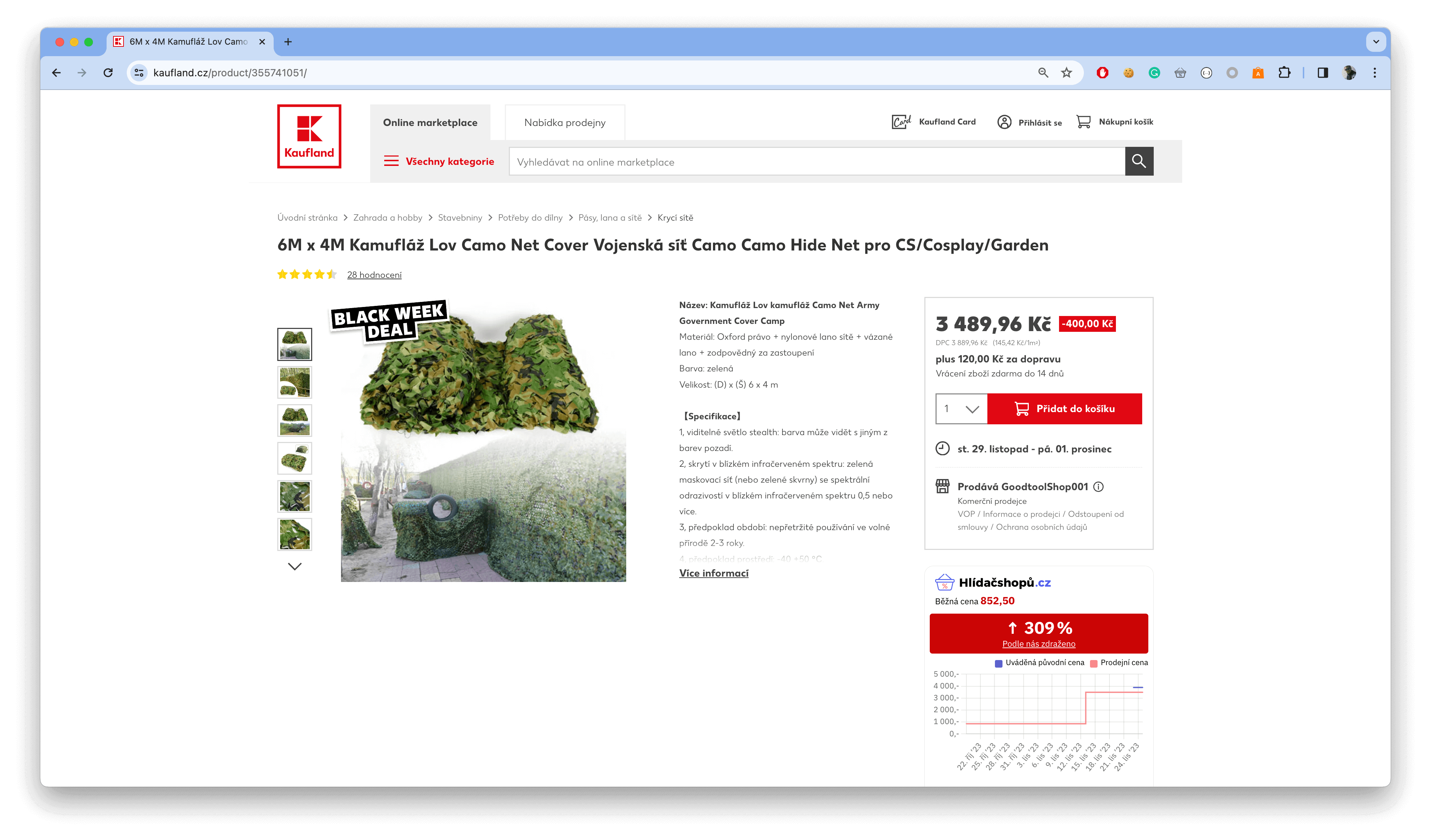
Until 13th November, it was sold for 852,50 CZK, and during Black Friday, it was on sale for 3 489,96 CZK with a 400 CZK discount. For the record, you could buy the same product on Kaufland.cz during Black Friday from other retailers with prices below CZK 1,000. Unfortunately, the 4x more expensive one (the only "discounted" one) was the best seller according to the e-shop:
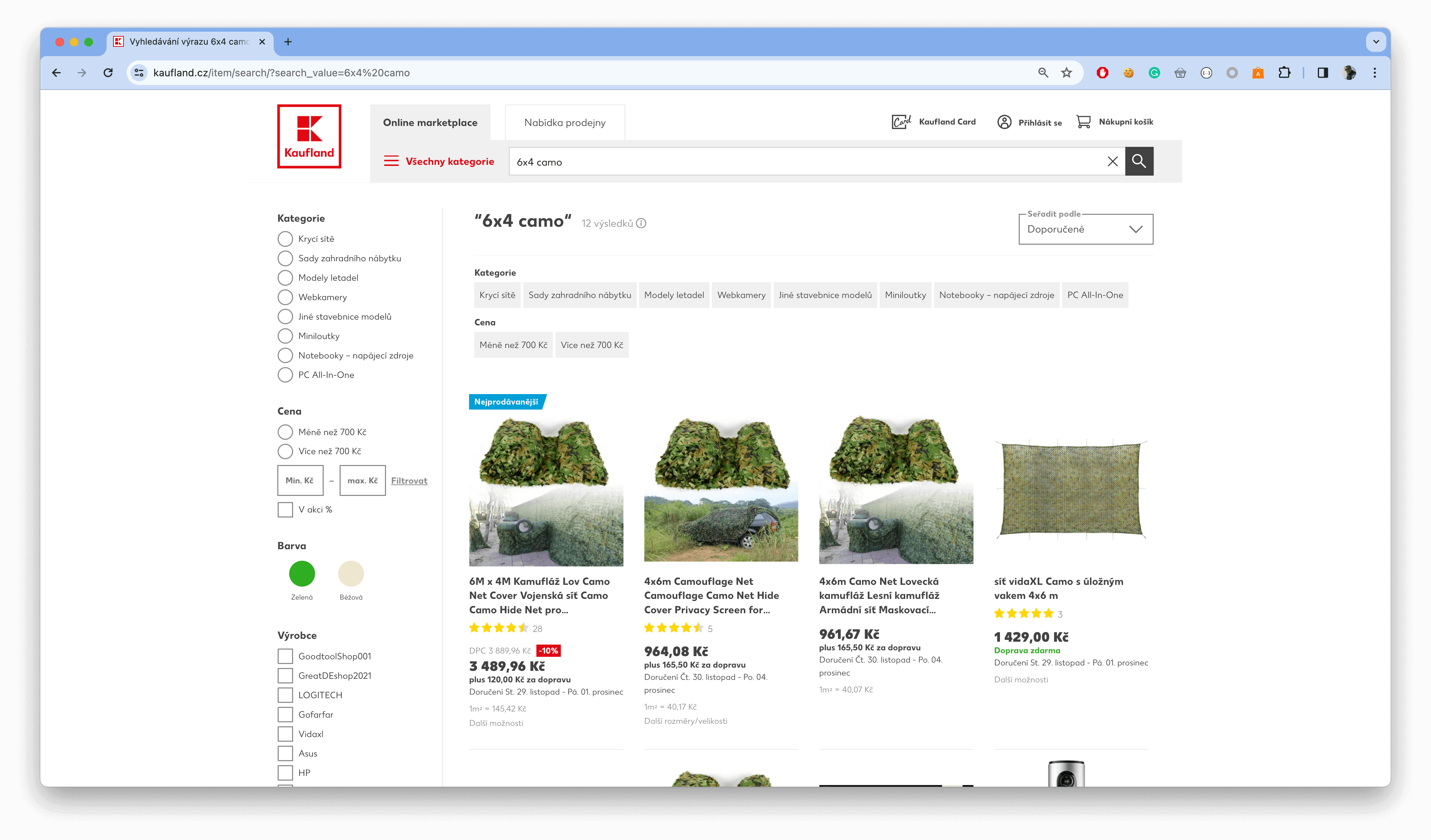
We add a commentary by Jana Malovcova from Mavericks law firm:
Violating these obligations is an offense for which the Czech Trade Inspection Authority may impose a fine of up to CZK 5 million on retailers. Acts that further fulfill the characteristics of unfair commercial practices may be subject to significantly higher penalties, up to 4% of the seller's total annual turnover (or up to CZK 50 million if information on yearly turnover is unavailable).
-Jana Malovcova, Mavericks
Another typical example of not respecting the new rules is this cream on Pilulka.cz:
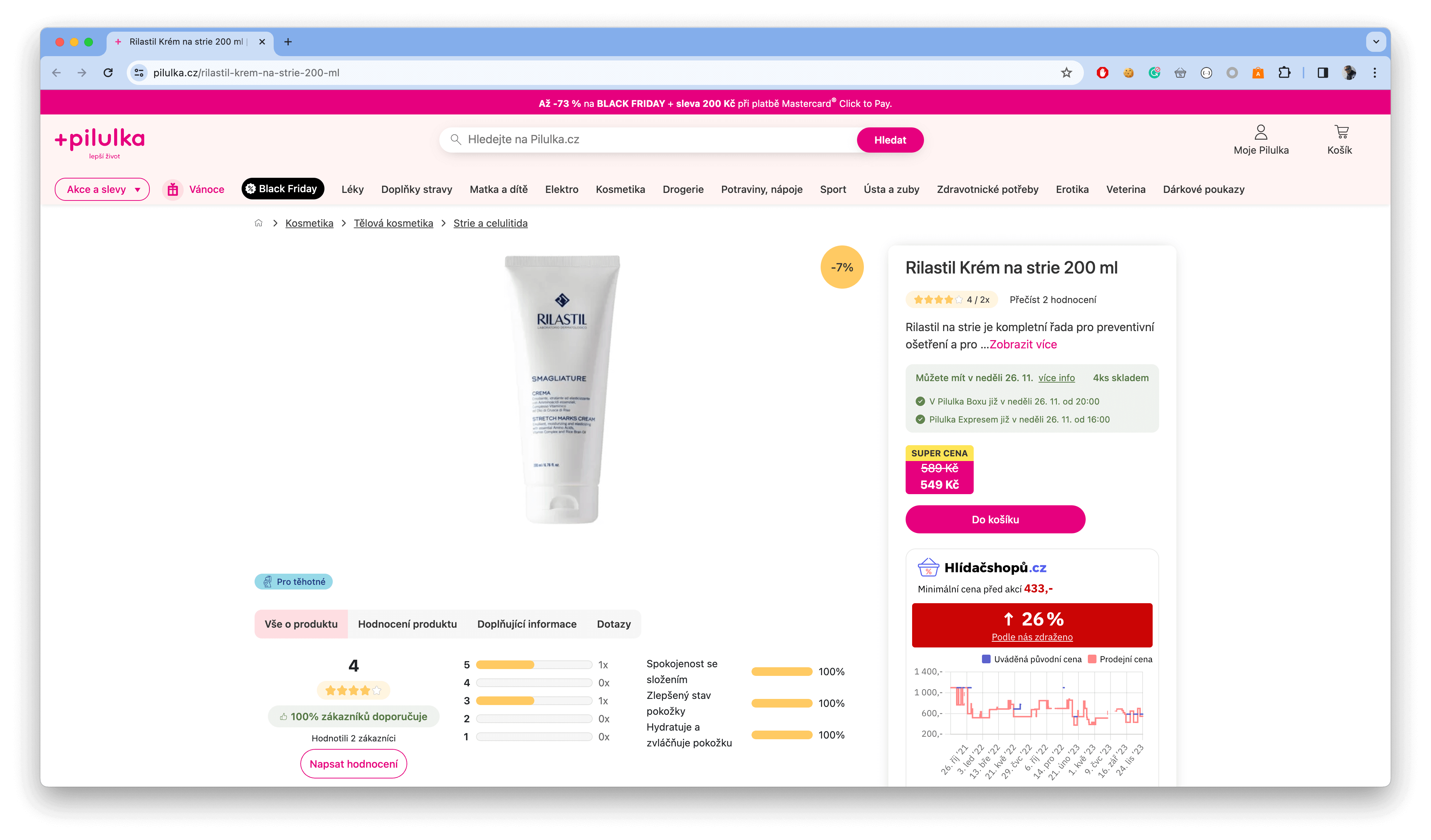
The product was listed in the Black Friday offer for 549 CZK with a 7% discount calculated from the crossed-out price of 599 CZK. However, if we look at the sales price history of this product, it was sold for 433 CZK from 18 October to 3 November (i.e., 30 days before the current discount offer), which is the minimum price before the promotion that the seller must quote, which implies that the product is 26% more expensive during the Black Friday promotion.
Pilulka.cz lists various types of discounts ("Super price," "Pill price," etc.) for the products in the Black Friday promotion. Still, in more than 65% of cases, it does not list any reference price at all (not even the minimum price before the promotion):

As Jana Malovcova points out:
-Jana Malovcova, Mavericks
TetaDrogerie.cz is another e-shop where we found apparent violations of the new rules. We see an attempt to display the minimum sale price before the event, but it does not correspond to the sale price history. For example, this perfume included in the Black Friday offer was discounted by 20% from CZK 999 to CZK 799. However, the e-shop listed a much more significant discount of CZK 1799, for which the product was only sold for a few days this year, most recently on 2nd August:
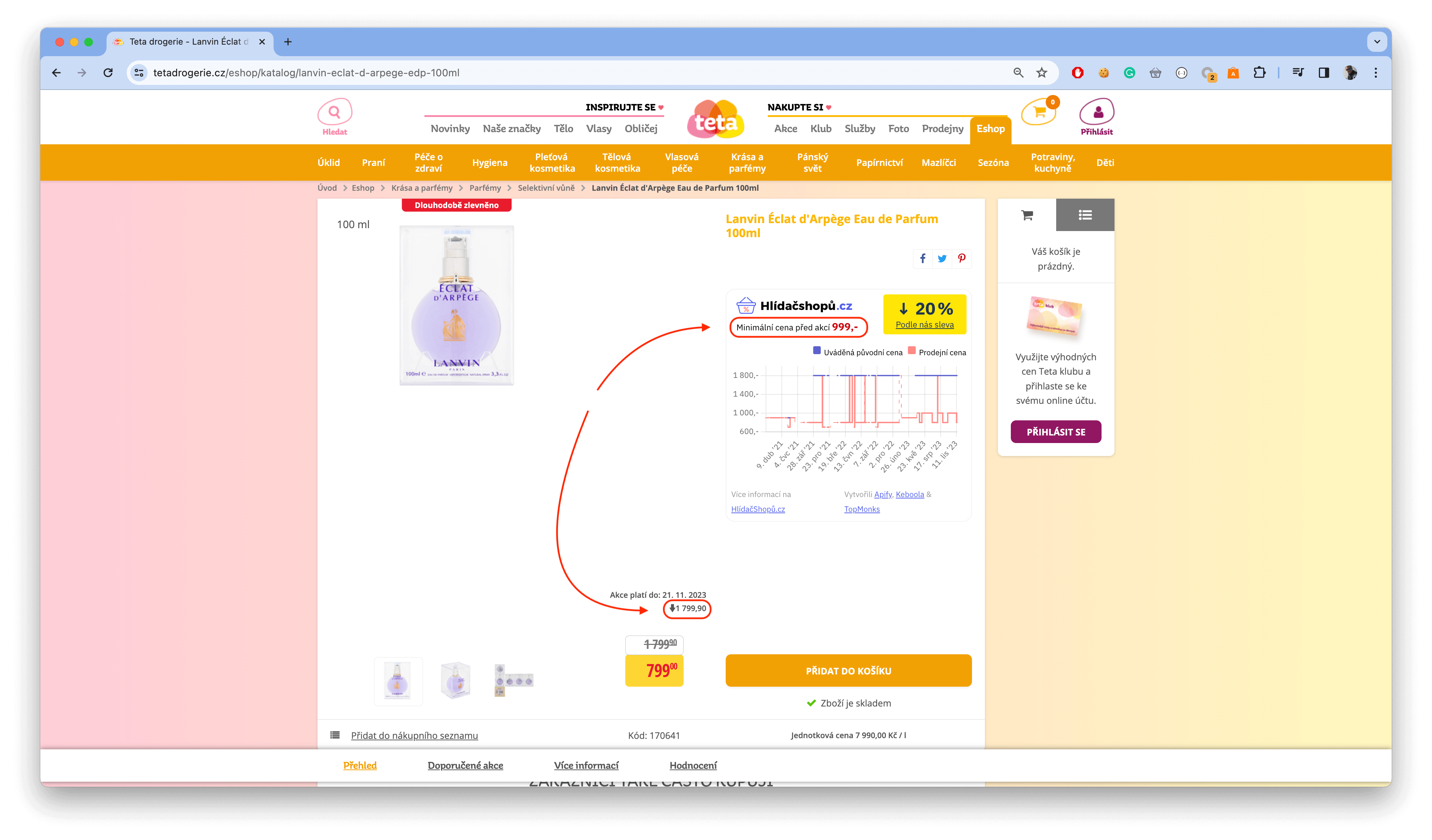
We found a similar example of violating the new rules on Okay.cz. For example, this microwave oven is included in the Black Friday offer with an "Additional discount" from 2199 CZK to 2099 CZK, the information about the minimum price before the event is missing, and according to our data the product is more expensive by 15% (since the minimum price before the event is 1817 CZK according to the price history):
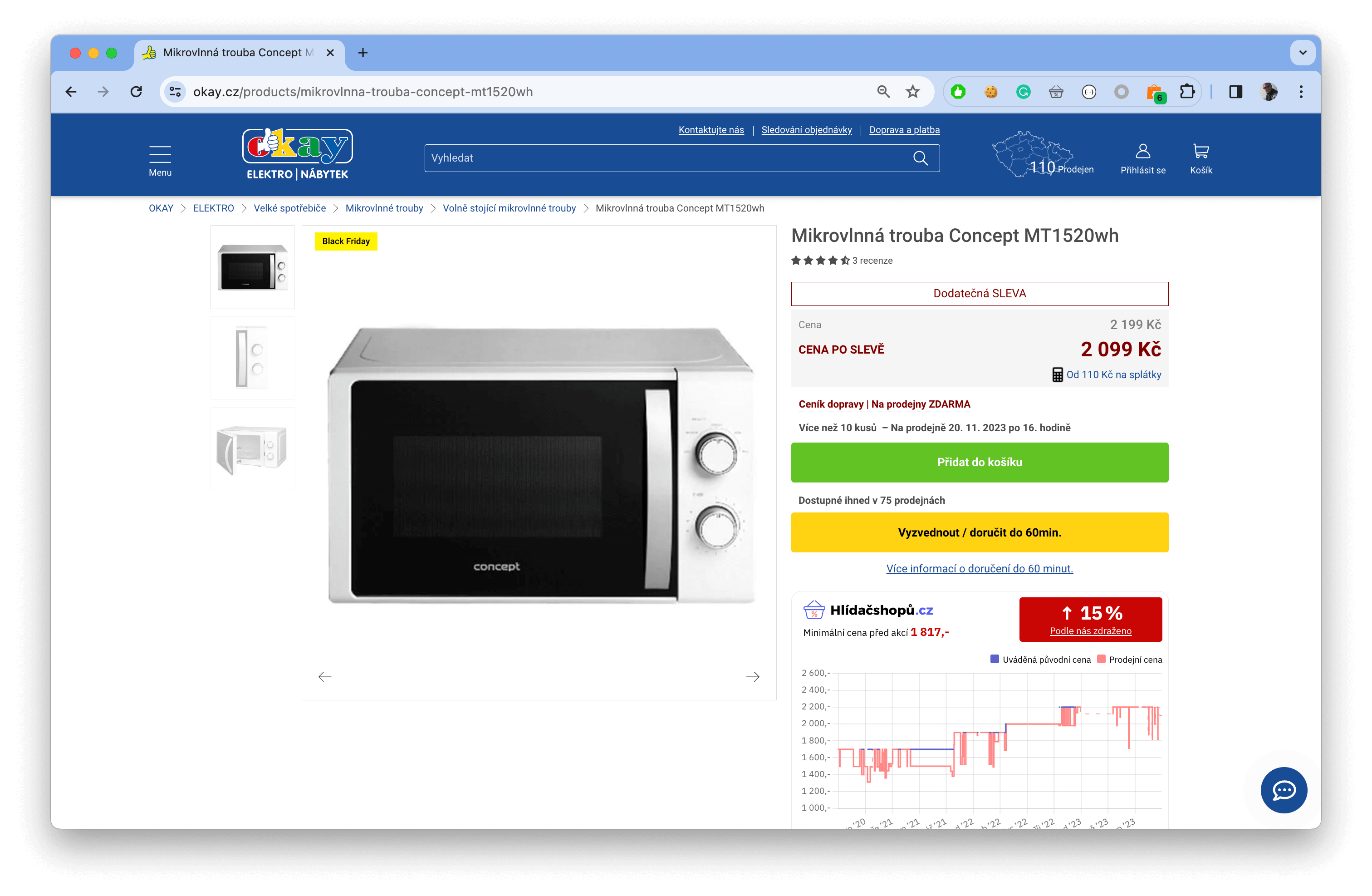
Anyway, Okay.cz was probably preparing for the new rules, as you can see from the variable names in the source code:
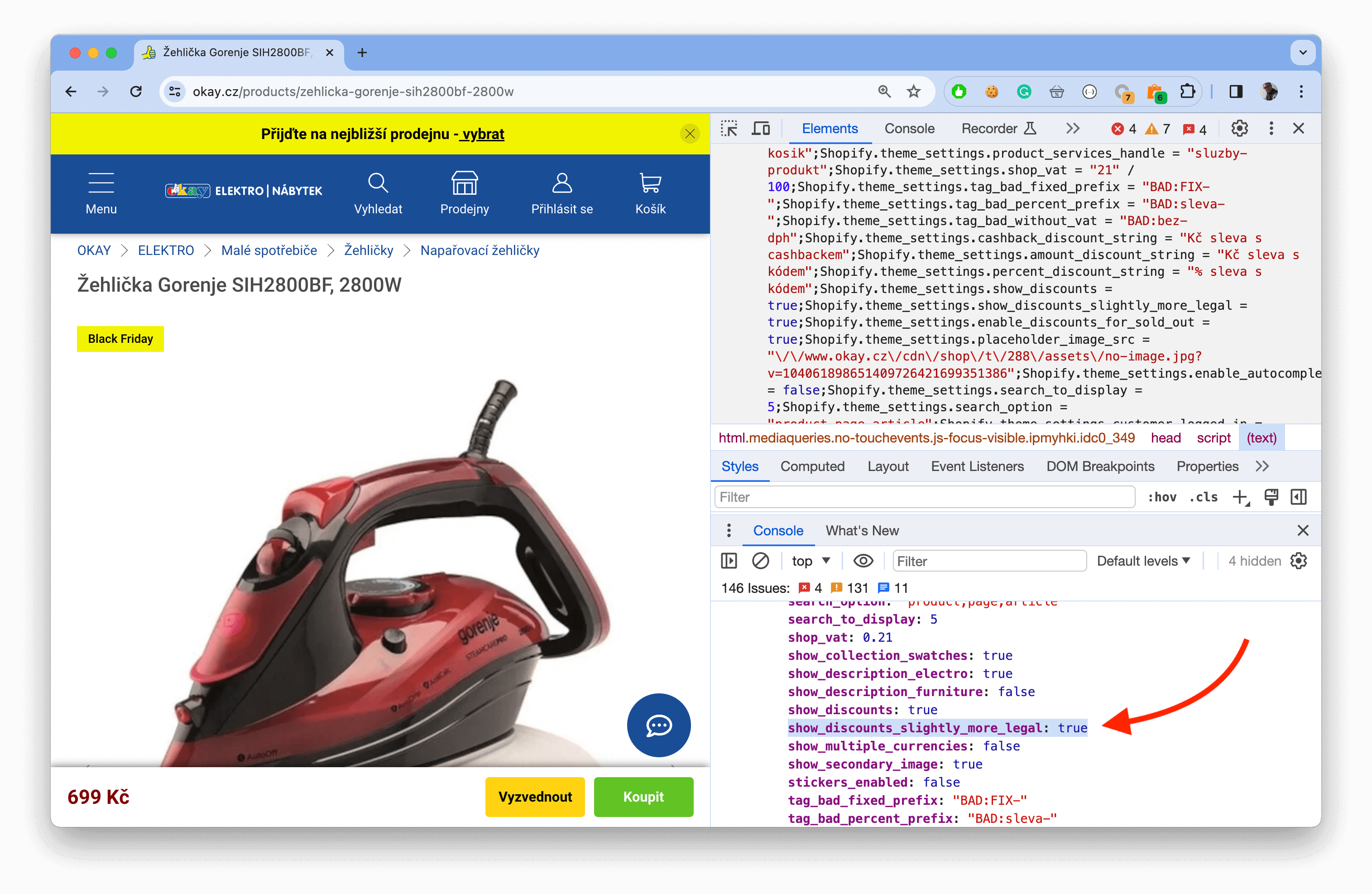
Where else have we found problematic discounts?
We have found products with incorrectly listed discounts at other e-shops; however, this is not a systematic problem but rather a misaligned system.
For example, we found problematic products in the Black Friday offer on Allegro.cz, which entered our market this year. For example, this blender was discounted from 529 CZK to 449 CZK:
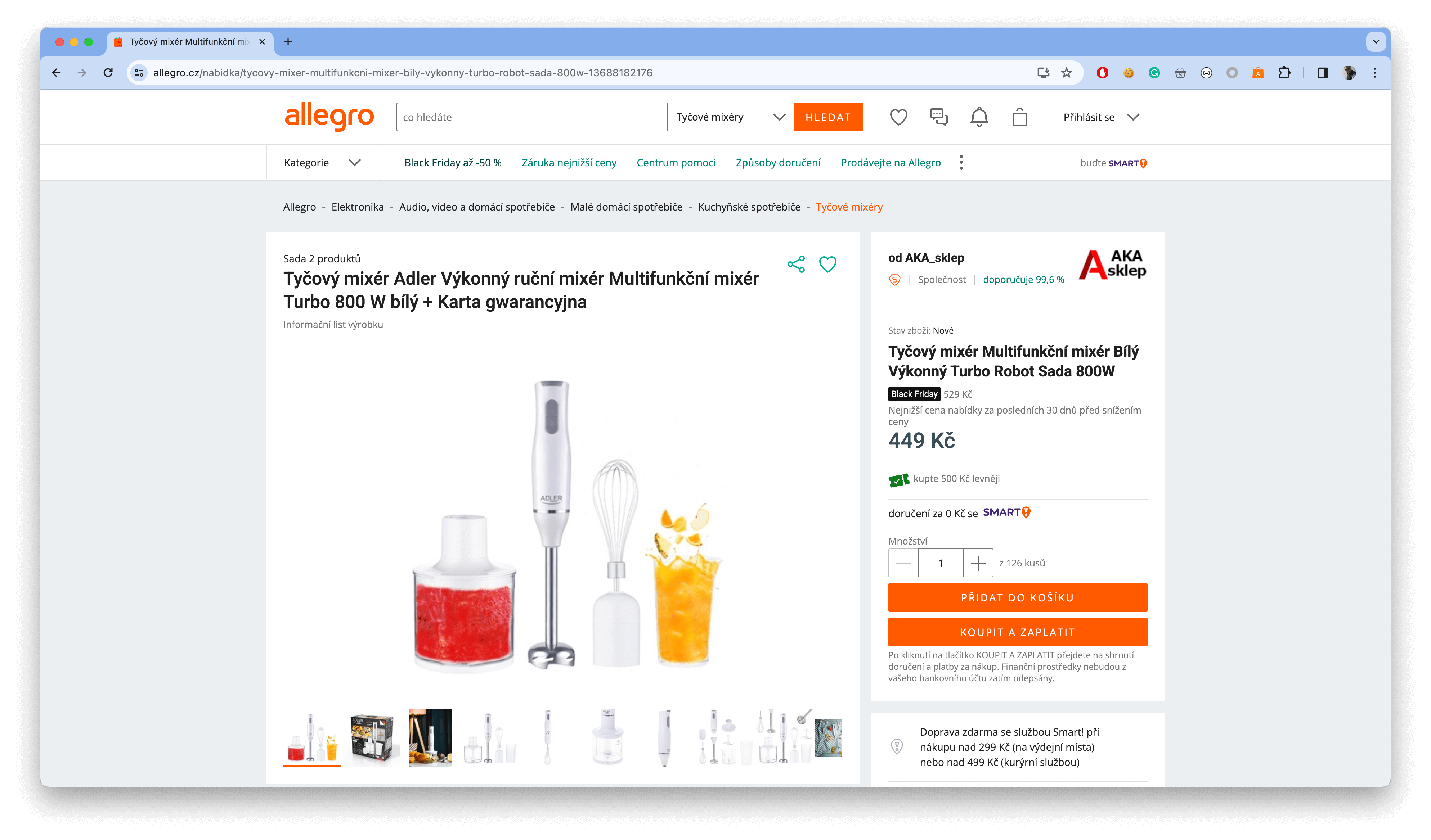
If we look at the price history on Hlídač Shopů, we will see that the product is not discounted according to the new rules. The minimum price before the event is also 449 CZK (for which it was sold on 27th October):
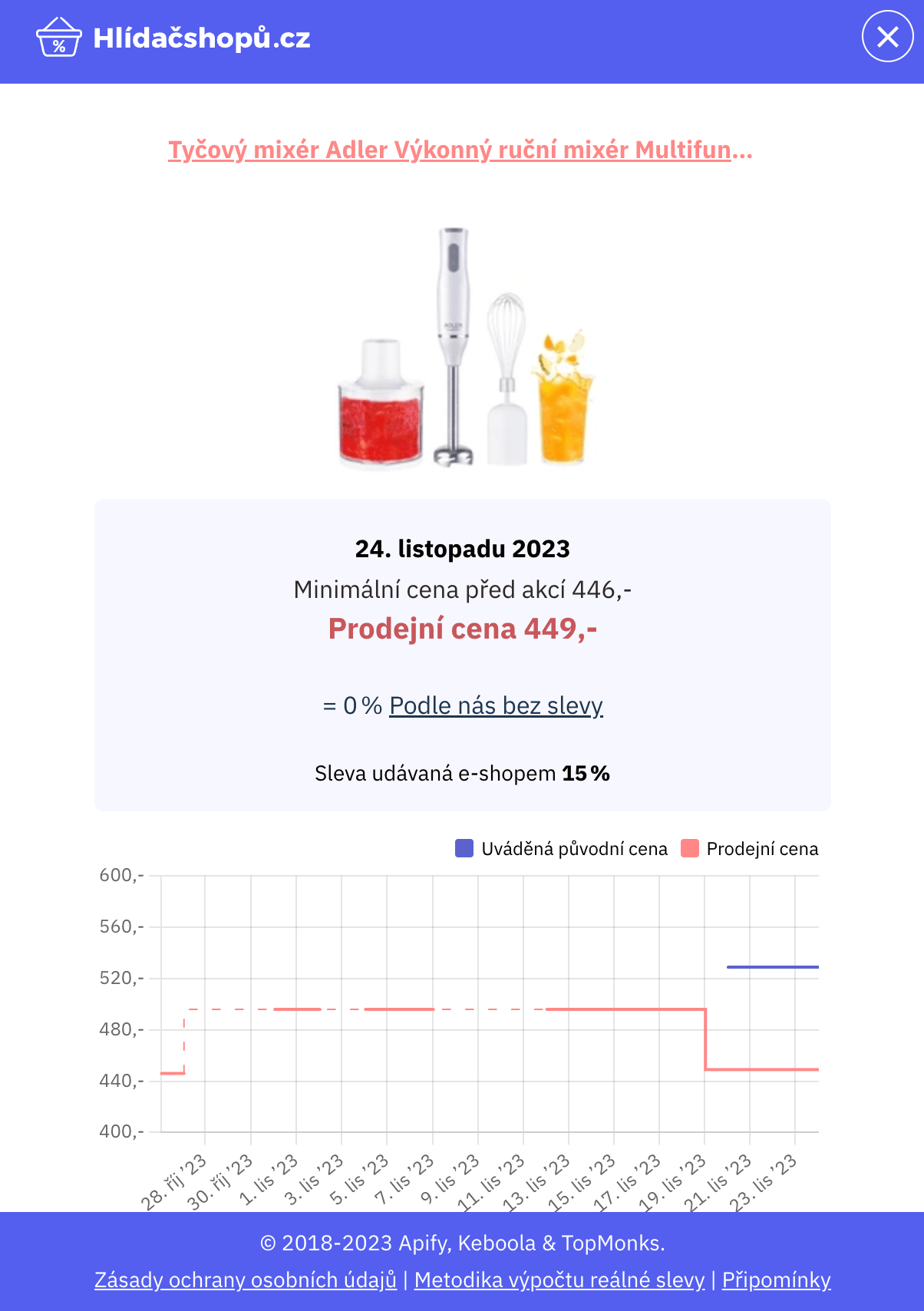
Datart.cz came out relatively OK in the overall evaluation of real discounts. However, for 7% of products in the Black Friday offer, the minimum price before the event was not indicated. An example is this Gamepad:
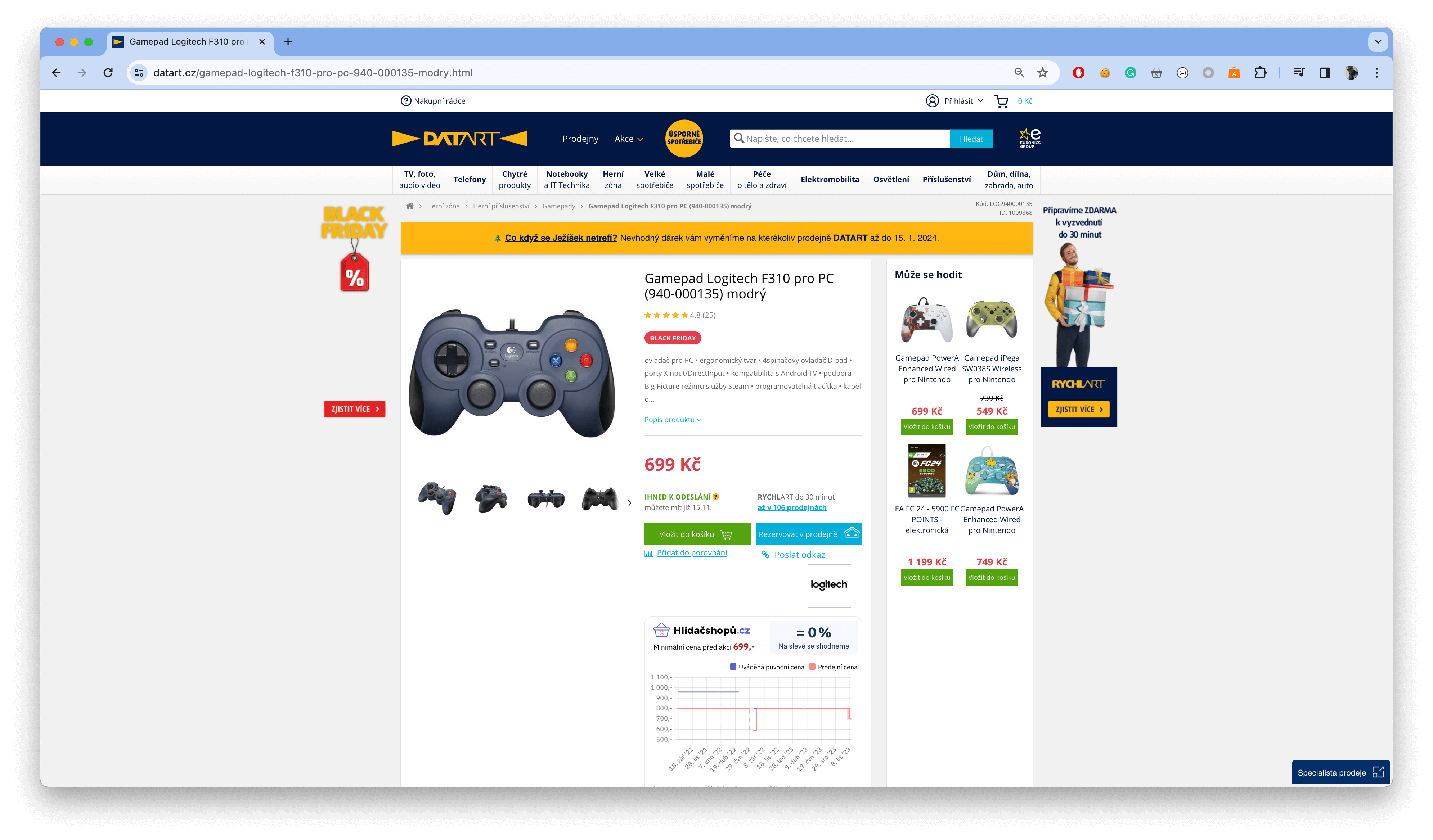
The product is listed in the Black Friday category (there is also a "Black Friday" label on the product detail). However, the minimum price before the event is missing. According to our data, the discount under the new rules is zero (as the product would be in a similar discount promotion just before Black Friday).
Elektroworld.cz also came out well in the statistics. However, we also found products in the Black Friday offer with the wrong minimum price before the event. For example, this chainsaw:
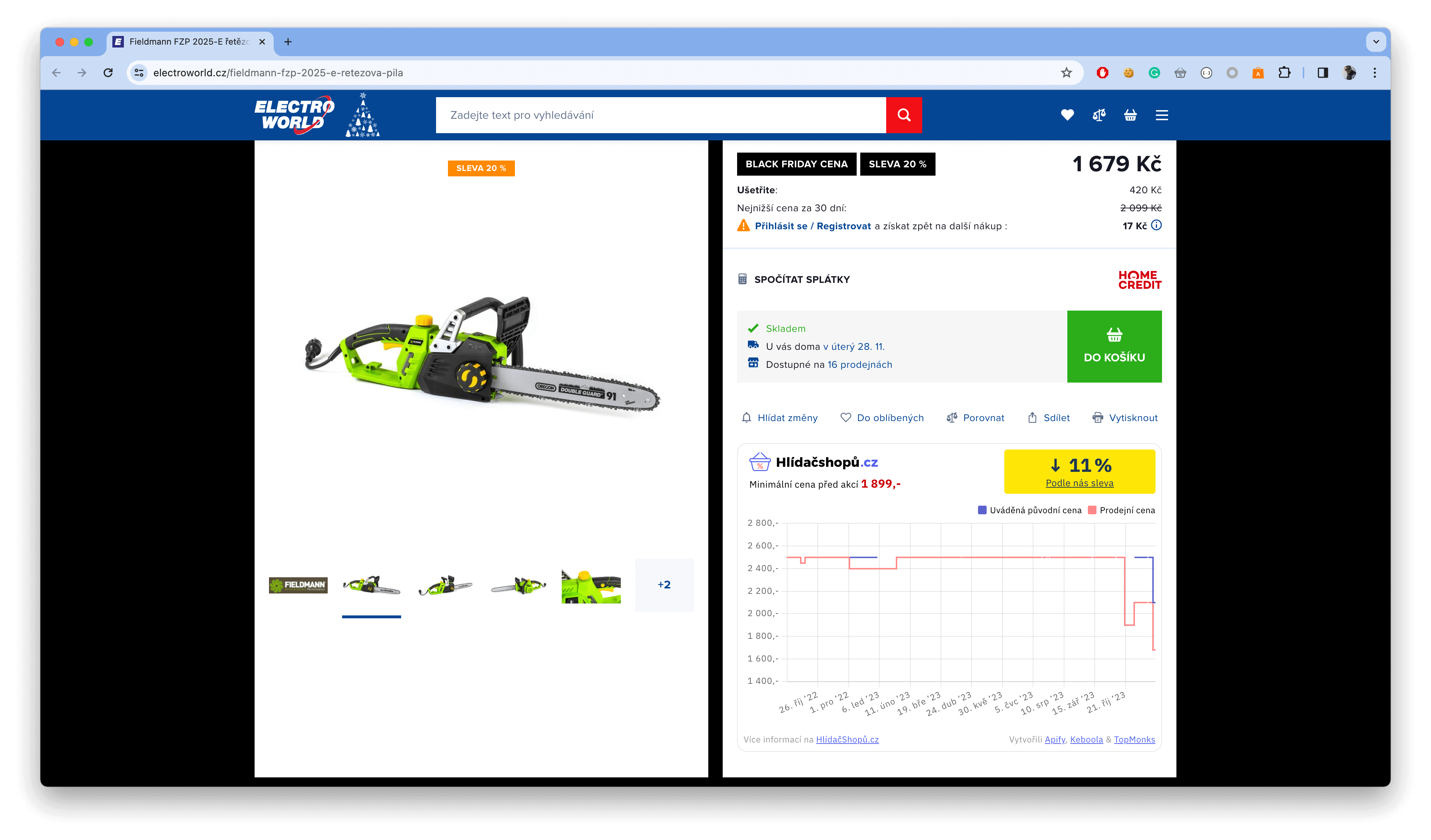
The product is discounted; however, the minimum price does not reflect the previous discount in October, so the discount is higher than the real discount.
We also found similar problem products on Lekarna.cz. For example, this dietary supplement was more expensive for 28 days before Black Friday. Until 19th October, it cost CZK 239, then from 20th October to 16th November, the price increased to CZK 319, to be subsequently "discounted" to CZK 249 by Black Friday. The minimum price before the promotion (calculated over at least 30 days) is, therefore, 239 CZK and the product was reduced by 4% by Black Friday.
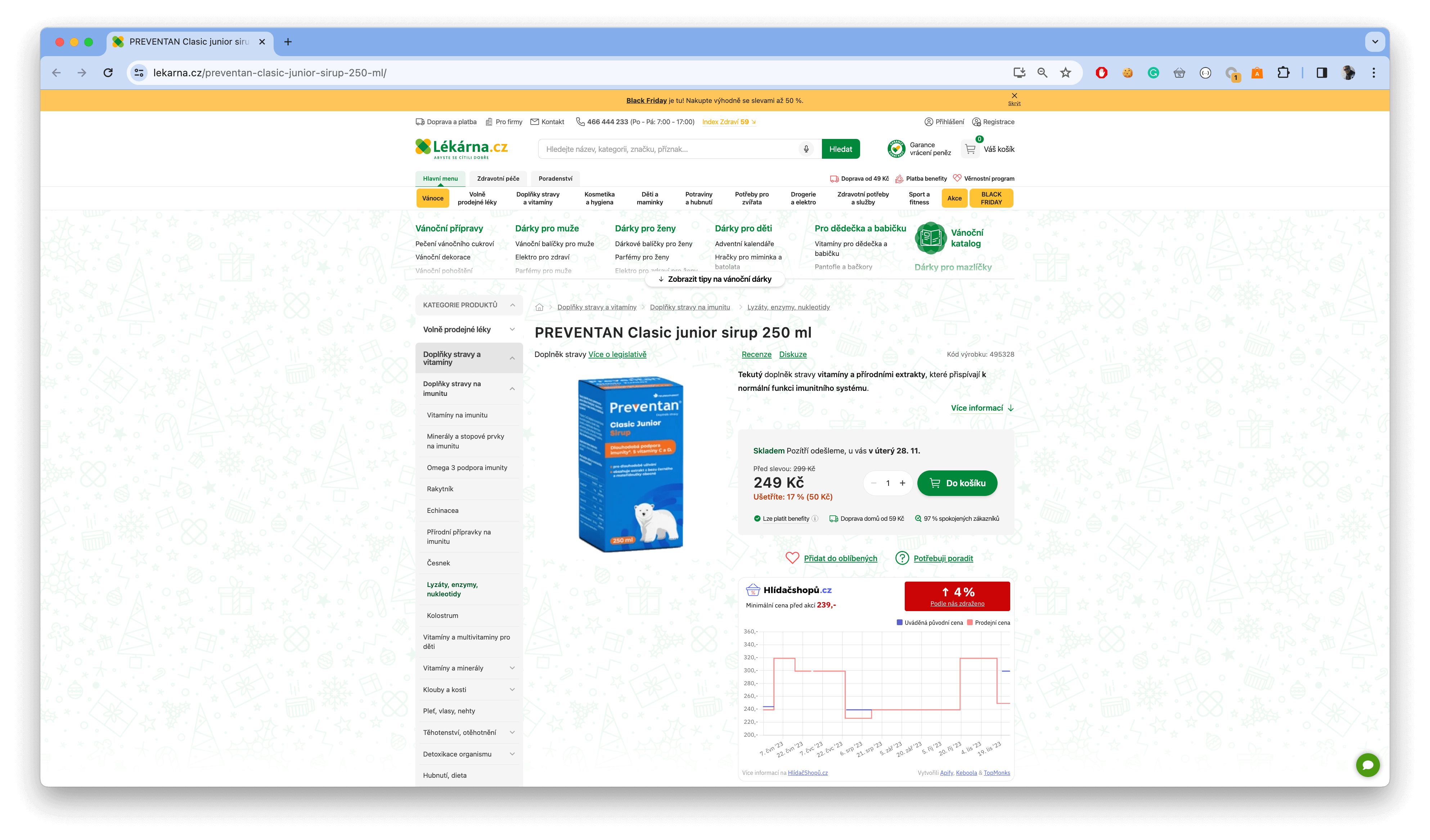
An interesting problem is the increase in price after the discount under the ongoing discount event. For example, Mironet.cz lists the minimum price before "Blue Friday" mostly correctly with the note "the original price is the lowest price 30 days before the event starts on November 1st, 2023". However, in some cases, the Blue Friday product subsequently becomes more expensive after the original discount and still lists the actual minimum price before the promotion, such as with this feed:
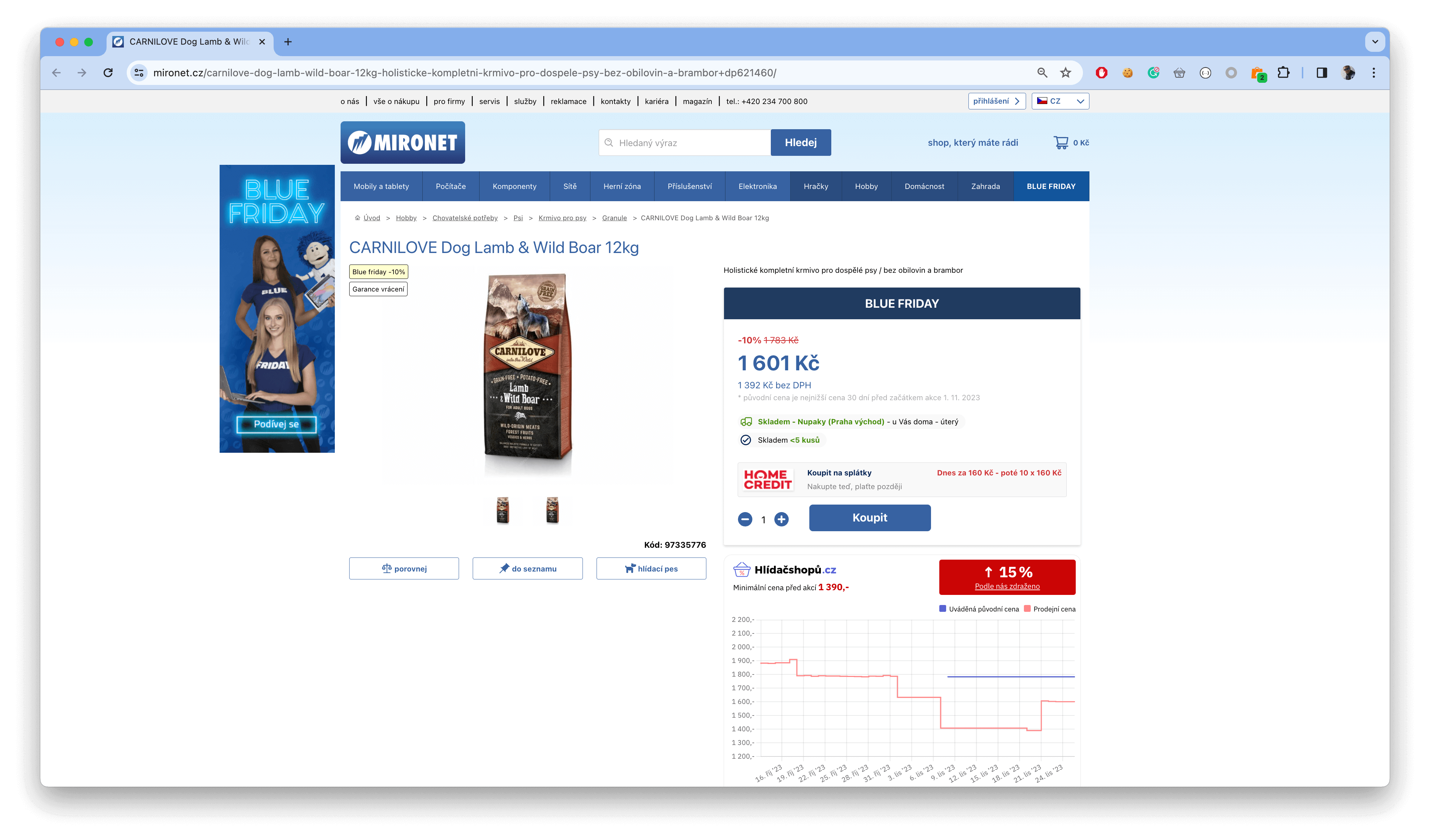
According to Jana Malovcova, this is also in violation of the new rules:
-Jana Malovcova, Mavericks
AAAauto.cz calculates the discounts correctly in the case of real discounted offers. However, for 49 offers in the Black Friday promotion, we have encountered a case where the car is included in the offer with the indicated discount right from the beginning of the sale. For example, this car appeared in the offer on 18th November immediately with a 4% "discount":

Another way: Discount Coupons
With the new law coming into force, a bag of discount coupons has been ripped open. Some e-shops use them during the Black Friday deals but do not follow the new rules.
For example, this shaver at Lekarna.cz:
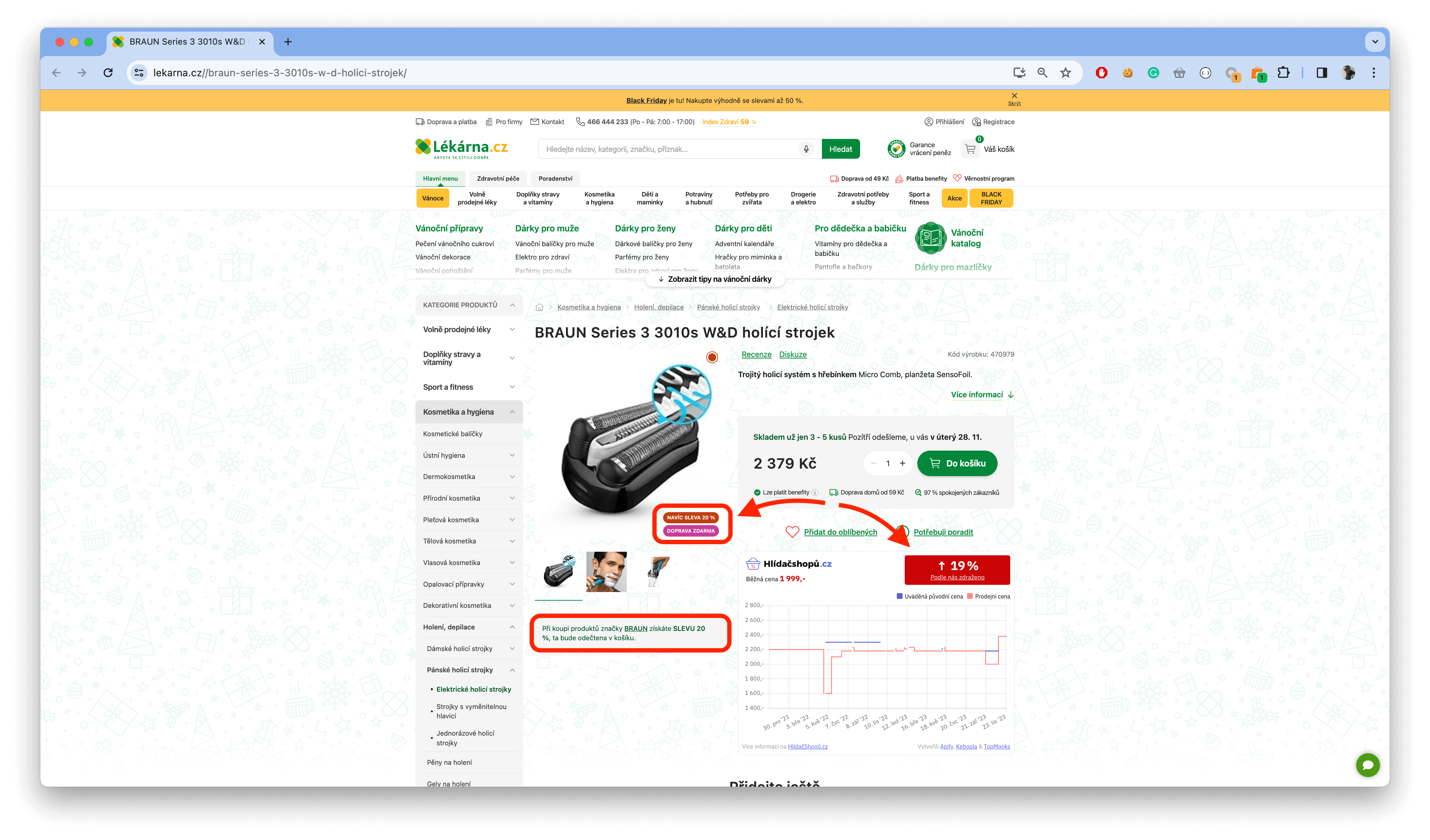
The advertised 20% discount from 2379 CZK is automatically deducted in the basket. However, information about the minimum price before the event is missing. The price is 1999 CZK, so the product is practically the same, but 20% more expensive, until the current 20% promotion.
Jana Malovcová explains:
-Jana Malovcova, Mavericks
Discount coupons for Black Friday are also used by Notino.cz. For example, this mask is offered during Black Friday promotions. Initially, a 15% code "Notino" "discounted" the product from 212 CZK to 180 CZK. However, the minimum price listed by the e-shop itself is 146 CZK. Thus, the product is actually priced at 23% (using the 15% discount coupon):
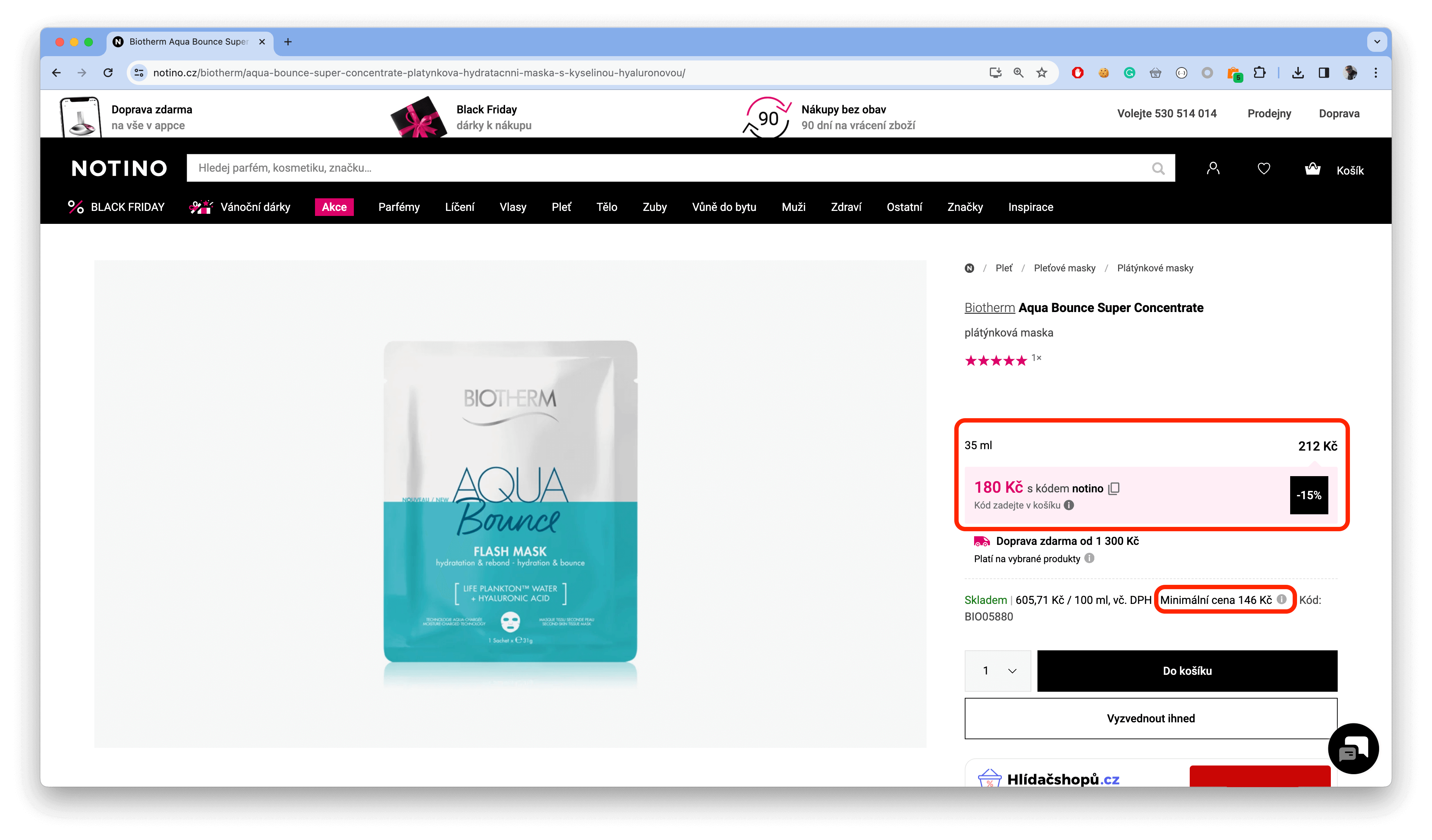
For the record, during the Black Friday promotions, the 15% discount coupon for this product was subsequently changed from "Notino" to "Black" at the same time as the price increased from CZK 212 to CZK 222 (from CZK 180 to CZK 189 after the "discount"):
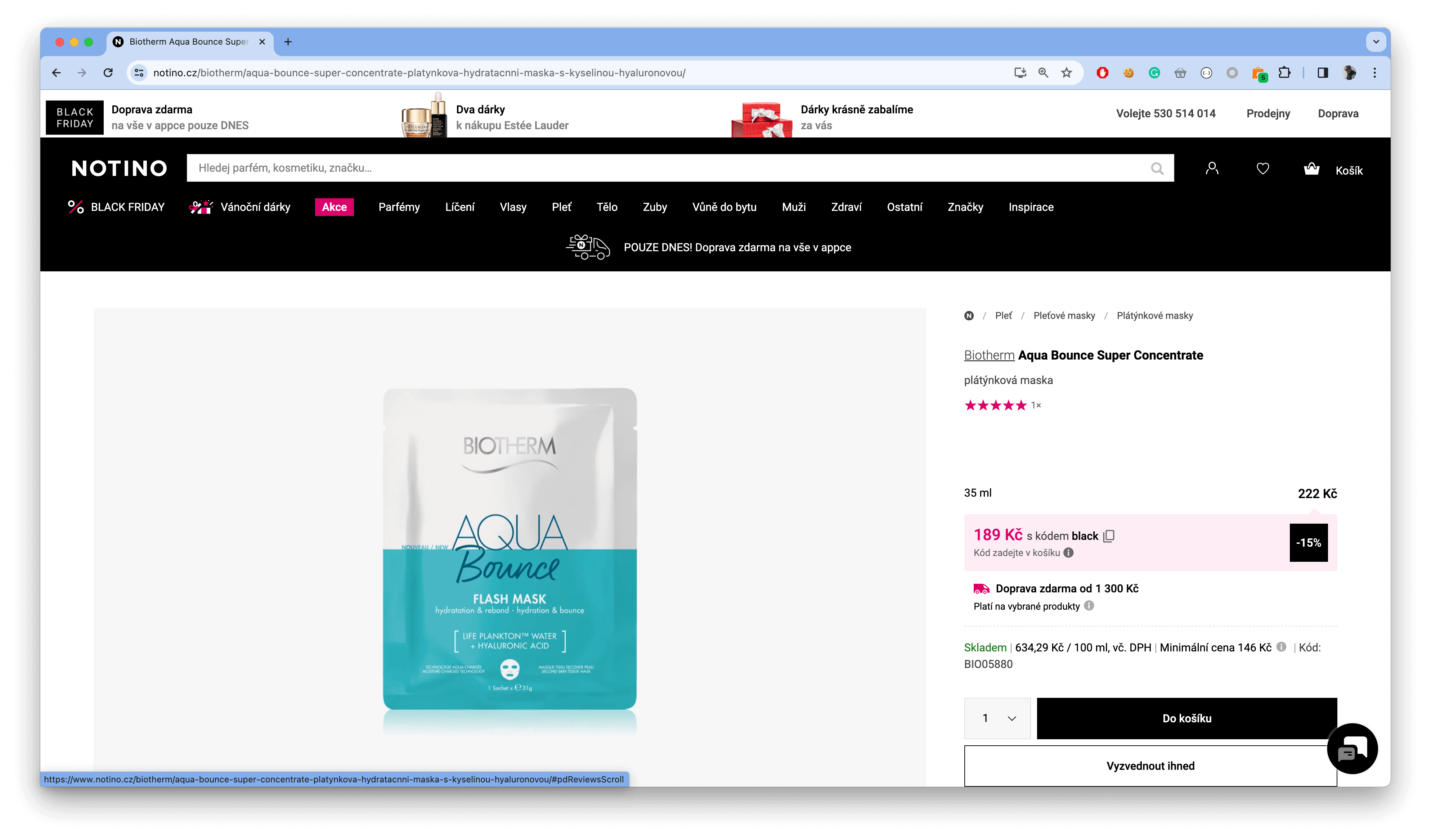
Another problem with discount coupons on Notino.cz is the failure to indicate the minimum price on the overview of products in the Black Friday offer. For example, in the next picture, you can only see the full price and the 15% coupon:
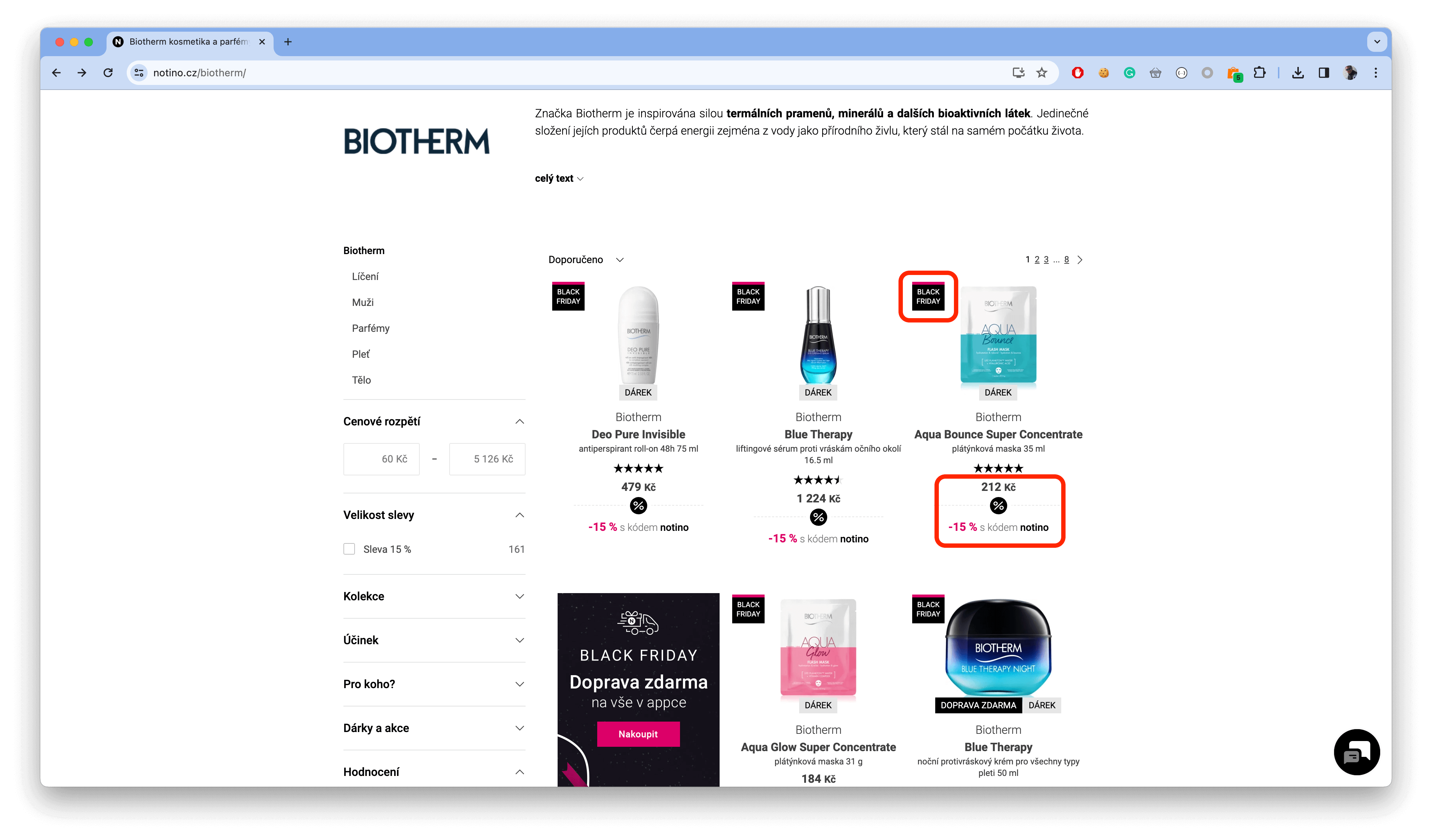
At the same time, the new rules do not prevent retailers from indicating other reference prices when announcing a price discount, provided that such additional reference prices are clearly explained, do not cause confusion, and do not distract the consumer from the main reference price. For example, a trader who provides discounts more frequently than once every 30 days may inform the consumer of other previous prices in addition to his obligations but must do so in a clear and understandable manner so as not to confuse or mislead the consumer as to what the main reference price is.
-Jana Malovcova, Mavericks
Another problem with coupons is their inclusion in the calculation of the lowest price before the event. Most e-shops use coupons throughout the year but do not include coupons from a previous promotion that ended within 30 days of the current promotion at the lowest price before the current promotion.
What about e-shops that we don't actively track?
For e-shops that we monitor, we can easily verify that the e-shop correctly calculates the minimum price before the promotion. However, the first obligation is to display this minimum price during the event and calculate its stated discount. And this can be verified by anyone on any e-shop that advertises a discount.
Whenever you see a similar discount calculation from, for example, the recommended retail price, it is clear that the e-shop breaches the new Consumer Protection Act.
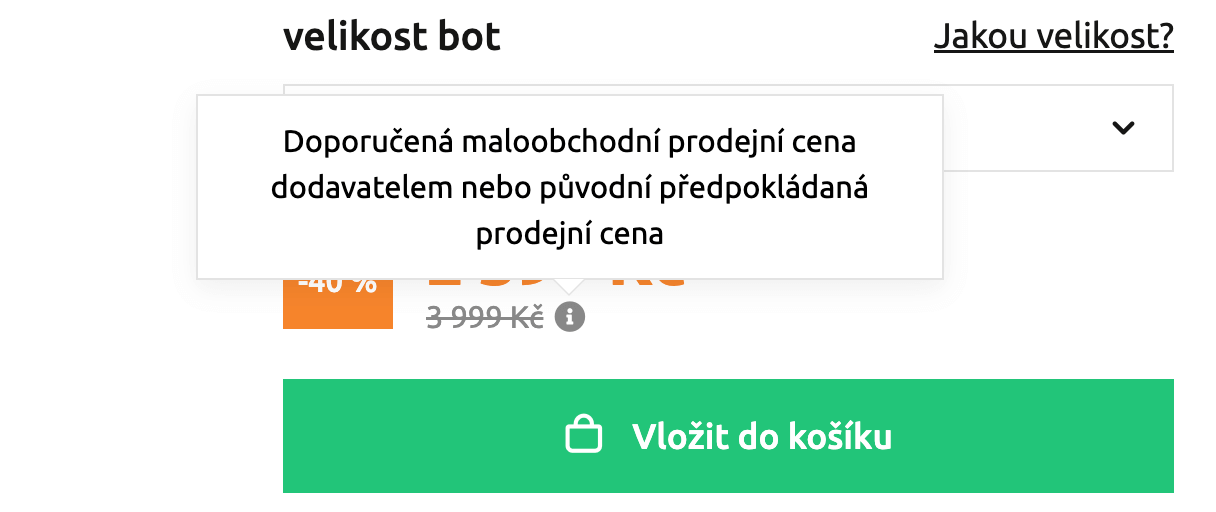
When the e-shop displays the minimum price before the event (in the example below in small text next to the product ID), the discount must be calculated from it, not from an arbitrary crossed-out price (as in this case).

Unfortunately, this is still a common practice in many Czech e-shops. And not only Czech ones - the team of Hlídač Shopů created an internal tool for the European Commission to check the compliance of advertised discounts with the new rules. And the results are similar. In last year's BF, we found rules violations in more than 40% of the 176 e-shops monitored in 11 member states. This year's Black Friday monitoring has already involved 16 Member States, tracking over 600 e-shops. We will know the results at the end of the year.
The non-profit project Hlídač Shopů is run for you by Apify, TopMonks, and Keboola.







